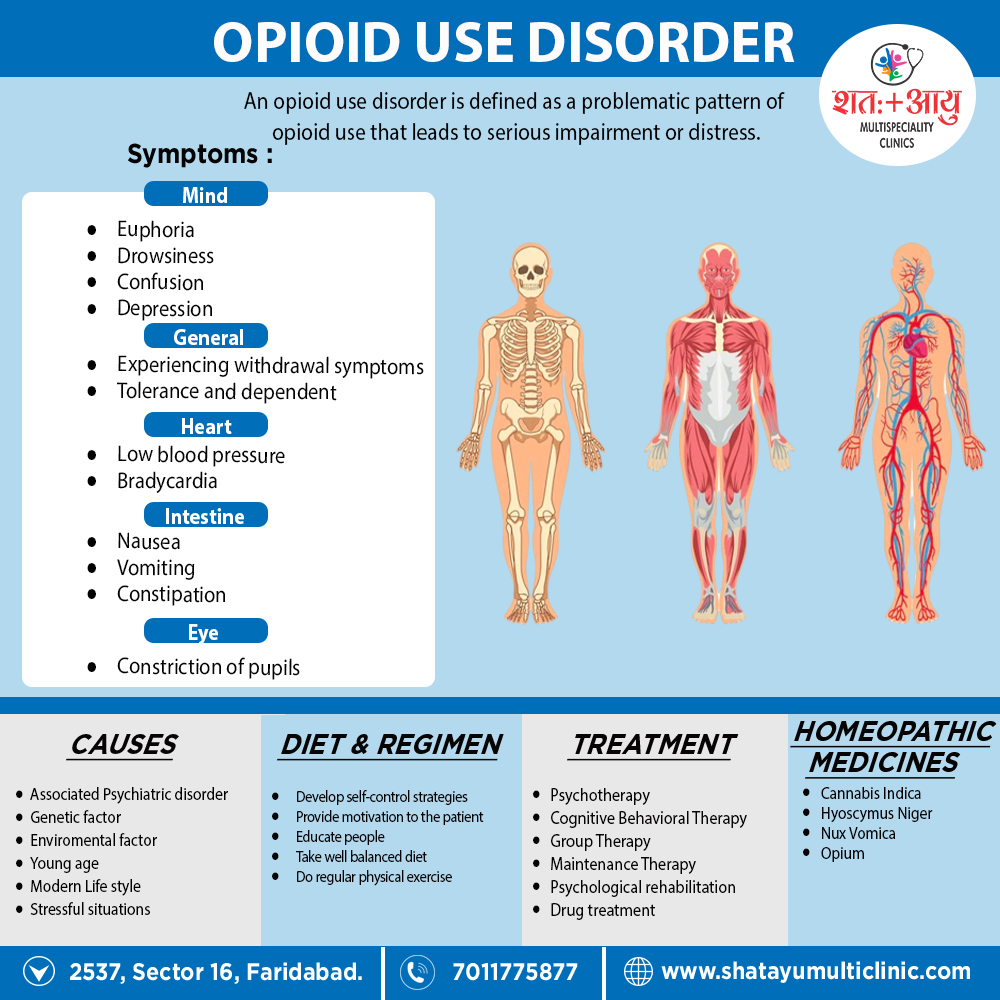The treatment can be divided into three main types:
1. Firstly; Treatment of overdose.
2. Secondly; Detoxification.
3. Thirdly; Maintenance therapy.
1. Treatment of Opioid Overdose:
The key clinical findings in a patient who has taken an overdose of opioids are:
- Respiratory depression (rate less than eight breaths per minute), possibly leading to respiratory arrest
- Unreactive pinpoint pupils
- Bradycardia
- Hypotension
- Snoring or other upper airway sounds
- Reduced level of consciousness.
Patients should be approached using the principles of airway, breathing, also circulation and treated with oxygen, respiratory support, fluids, and inotropes if necessary. [1]
An overdose of opioid can treated with narcotic antagonists (such as naloxone, naltrexone). Additionally; Usually an intravenous injection of 2 mg naloxone, followed by a repeat injection in 5-10 minutes, can cause reversal of overdose.
But as naloxone has a short half-life repeated doses may be needed every 1-2 hours. Lastly; This should combined with general care and supportive treatment. [2]
2. Detoxification (Planned withdrawal of opioids):
This is a mode of treatment in which the dependent person is ‘taken off’ opioids. In detail; This is usually done abruptly, followed by management of emergent withdrawal symptoms.
It is highly recommend that detoxification is conduct in a safe manner under expert guidance of a specialist.
The withdrawal symptoms can managed by one of the following methods i.e.:
Use of substitution drugs i.e.:
Such as methadone to ameliorate the withdrawal symptoms. The aim is to gradually taper off the patient from methadone (which is less addicting, has a longer half-life, decreases possible criminal behaviour, and has a much milder withdrawal syndrome).
However, relapses are common and its opponents argue that one type of dependence is often replaced by another (methadone).
Clonidine i.e.:
Basically; It is an α2 agonist that acts by inhibiting norepinephrine release at presynaptic α2 receptors. The usual dose is 0.3-1.2 mg/day, also drug is tapered off in 10-14 days.
It can be started after stoppage of either the opioid itself or the substitution drug (for example; methadone). The important side effects of clonidine are excessive sedation and postural hypotension.
Lastly; Clonidine treatment is usually started in an inpatient psychiatric or specialist alcohol and drug treatment center setting.
Naltrexone with Clonidine i.e.:
Naltrexone is an orally available narcotic antagonist which, when give to an opioid dependent individual, causes withdrawal symptoms. These symptoms are manage with the addition of clonidine for 10-14 days after which clonidine is withdraw and the patient is continue on naltrexone alone.
Now if the person takes an opioid, there are no pleasurable experiences, as the opioid receptors are block by naltrexone.
Therefore, this method is a combination of detoxification and maintenance treatment. The usual dose of naltrexone is 100 mg orally, administered on alternate days.
Other Drugs i.e.:
The other detoxification agents include LAAM (levo-alpha-acetyl-methadol), propoxyphene, diphenoxylate, buprenorphine (long acting synthetic partial μ-agonist which can be administered sublingually), and lofexidine (α2 agonist, similar to clonidine).
In particular, Buprenorphine has recently used widely for detoxification as well as for maintenance treatment in many parts of the World. Care must be exercised as there is potential for misuse with buprenorphine. [2]
When heroin is withdrawn, psychological support is particularly important to avoid immediate relapse. Withdrawal usually undertaken by substituting methadone (a longer-acting drug) for heroin.[1]
3. Maintenance Therapy:
After the detoxification phase is over, the patient is maintain on one of the following regimens:
Methadone maintenance (Agonist substitution therapy) i.e.:
This a very popular method use widely in the Western World. 20-50 mg/day of methadone is give to the patients to ‘shift’ them from ‘hard’ drugs, thus decreasing IV use and criminal behaviour.
Its use in India has not recommended by an expert committee for de-addiction services. Other drugs such as LAAM and buprenorphine can used for maintenance treatment.
Opioid antagonists i.e.:
Opioid antagonists have in use for a long time but they were either partial antagonists (such as n alorphine) or had to administer parenterally (such as naloxone).
Furthermore; The usual maintenance dose is 100 mg on Mondays and Wednesdays, and 150 mg on Fridays.
Naltrexone combine with clonidine, as describe above, is a very effective method for detoxification as well as for maintenance treatment.
Other methods i.e.:
These include individual psychotherapy, behaviour therapy, interpersonal therapy, cognitive behaviour therapy (CBT), motivational enhancement therapy, self-control strategies, psychotropic drugs for associated psychopathology, family therapy, and group therapy (e.g. in therapeutic communities such as Synanon, self-help groups such as Narcotic Anonymous or NA).
These methods have to tailored for use in an individual patient.
Psychosocial rehabilitation i.e.:
This is a very important step in the post-detoxification phase, in the absence of which relapse rates can very high. Rehabilitation should at both occupational and social levels. [2]

